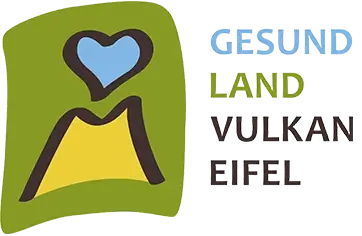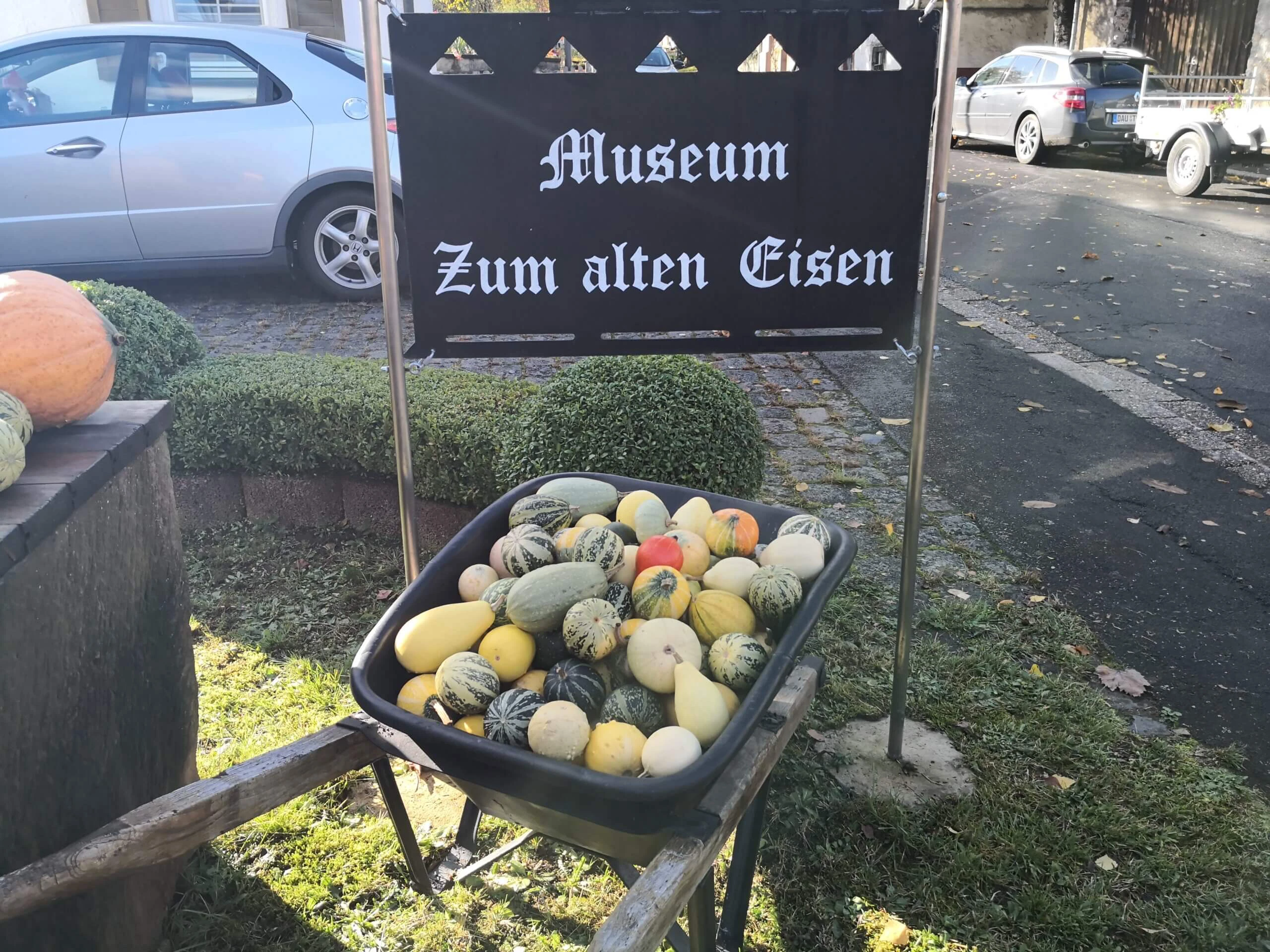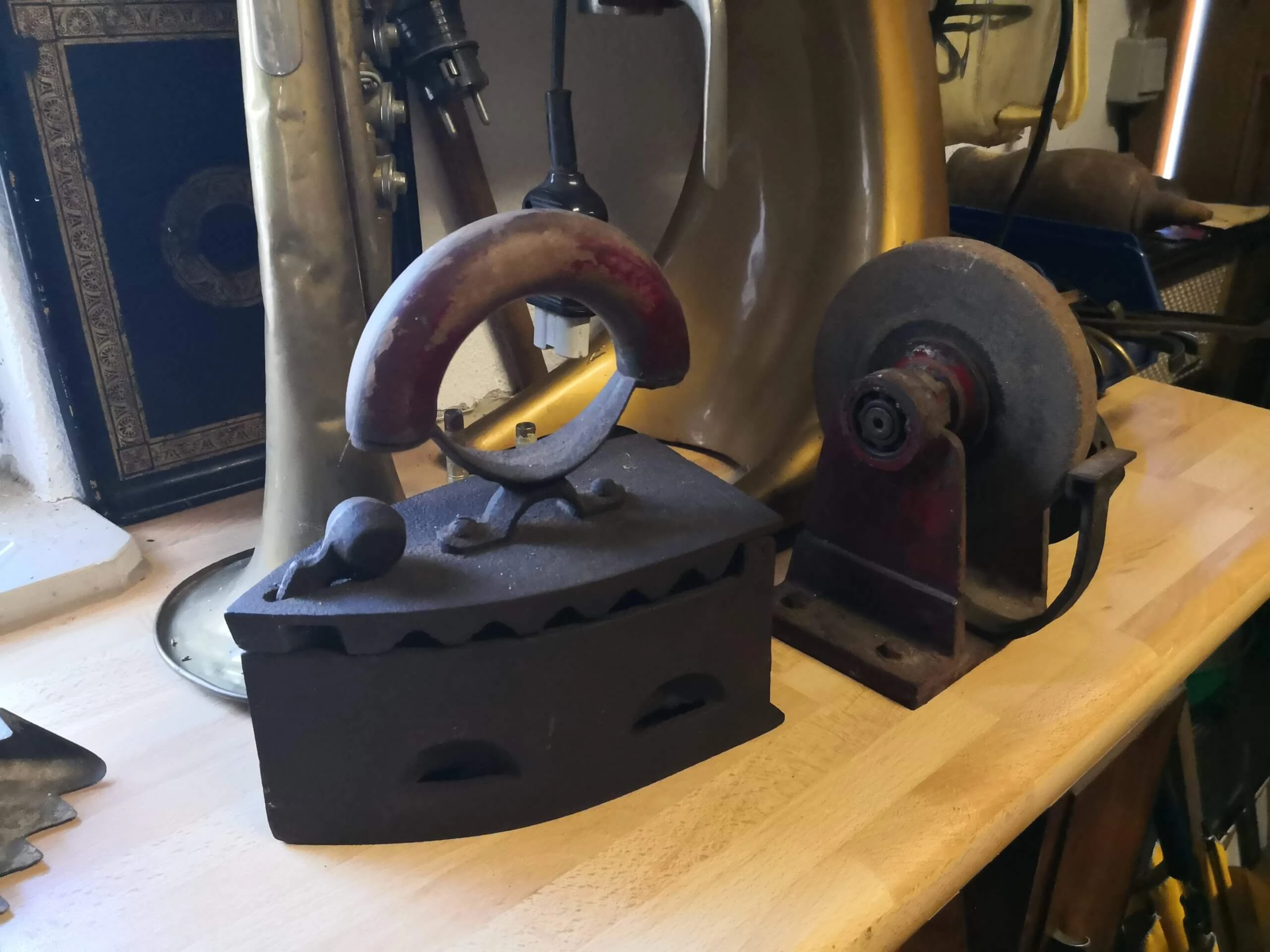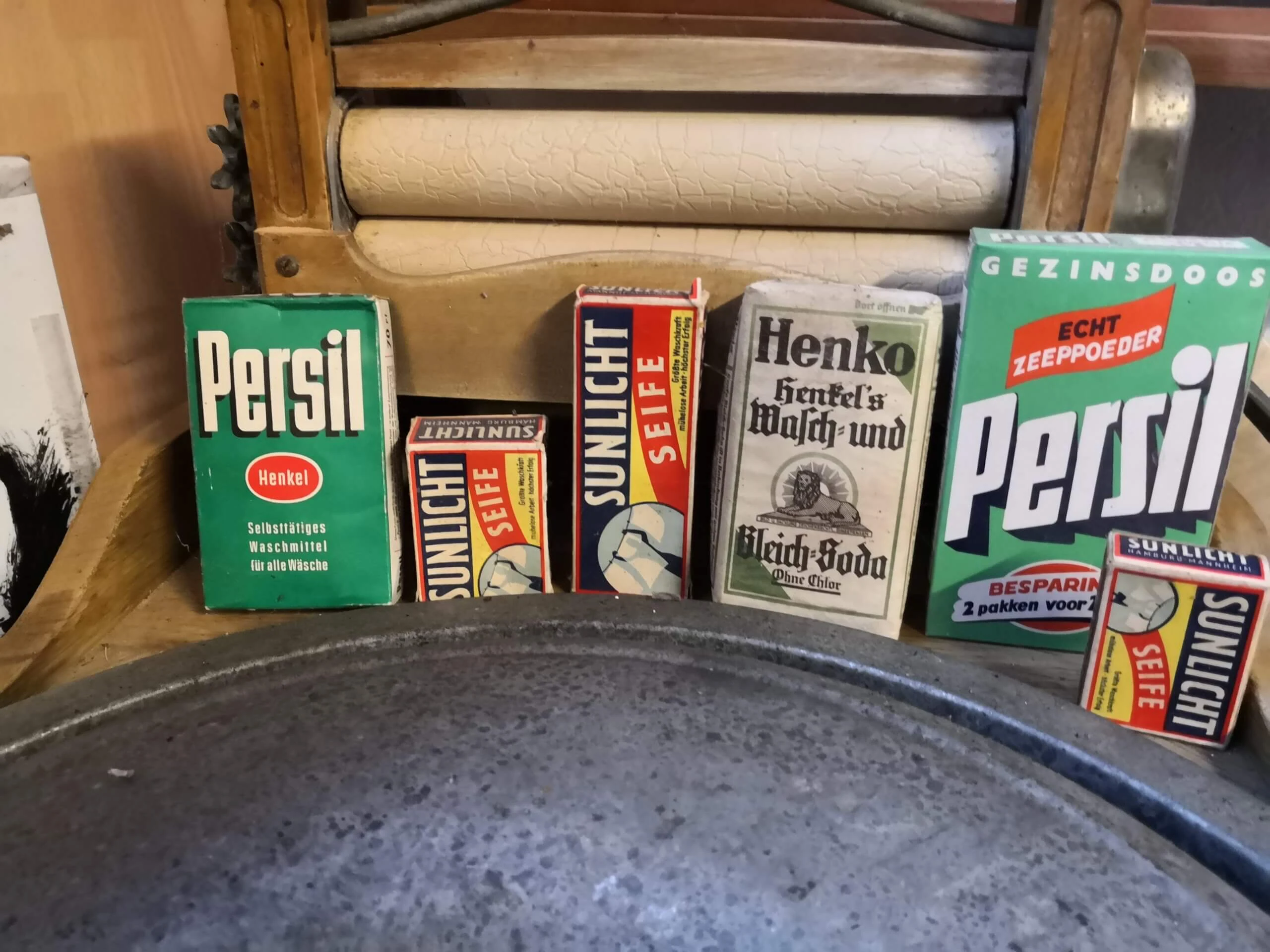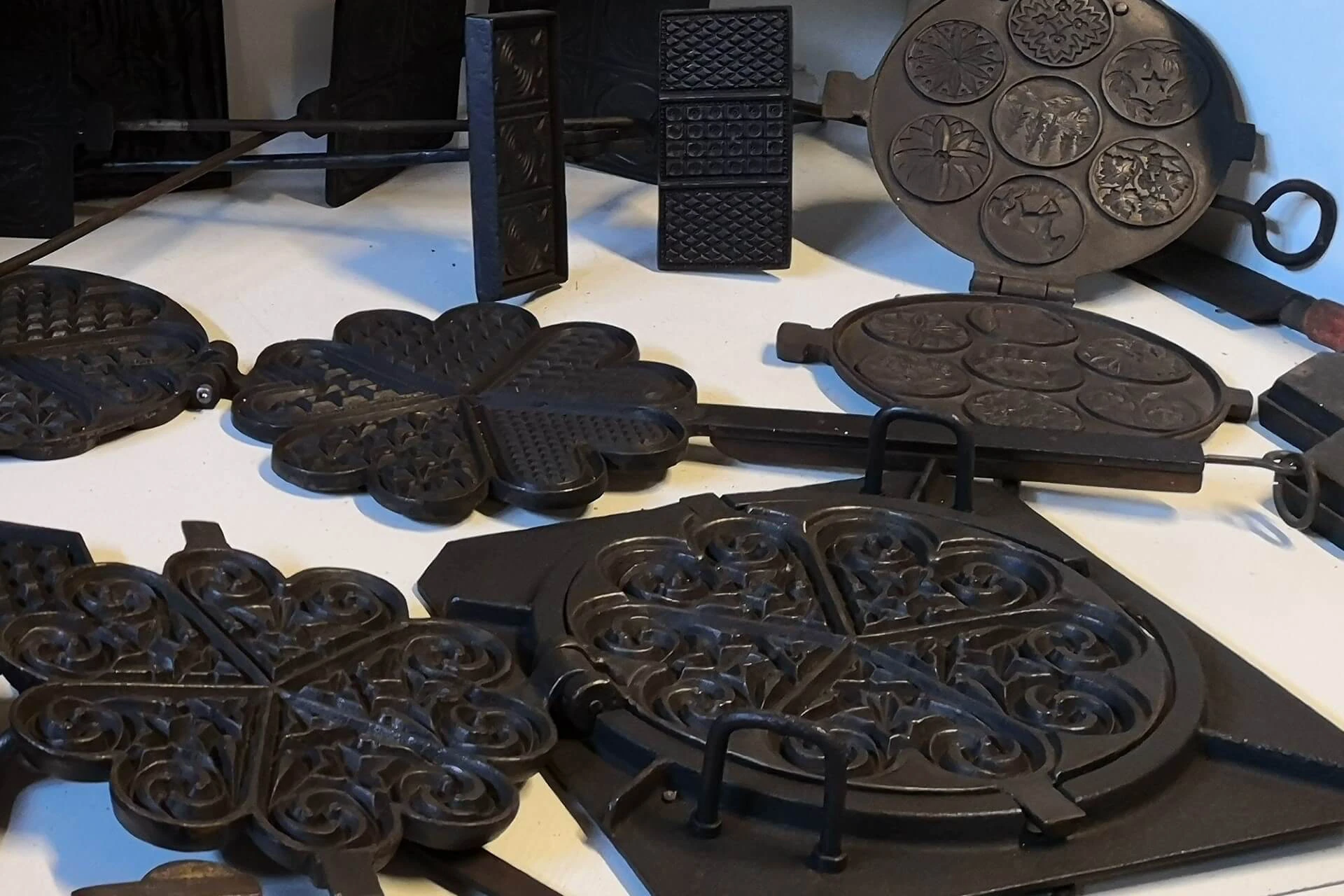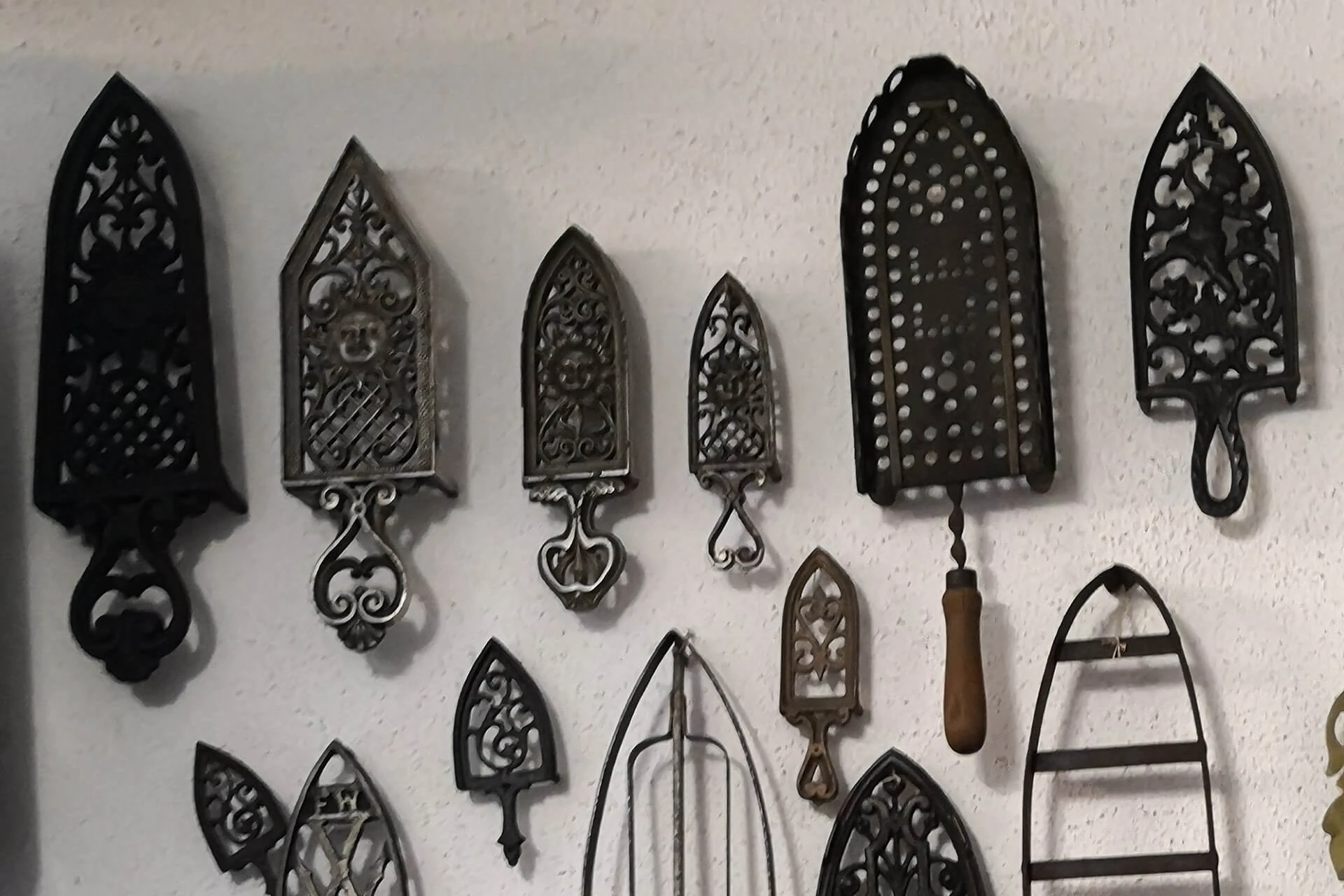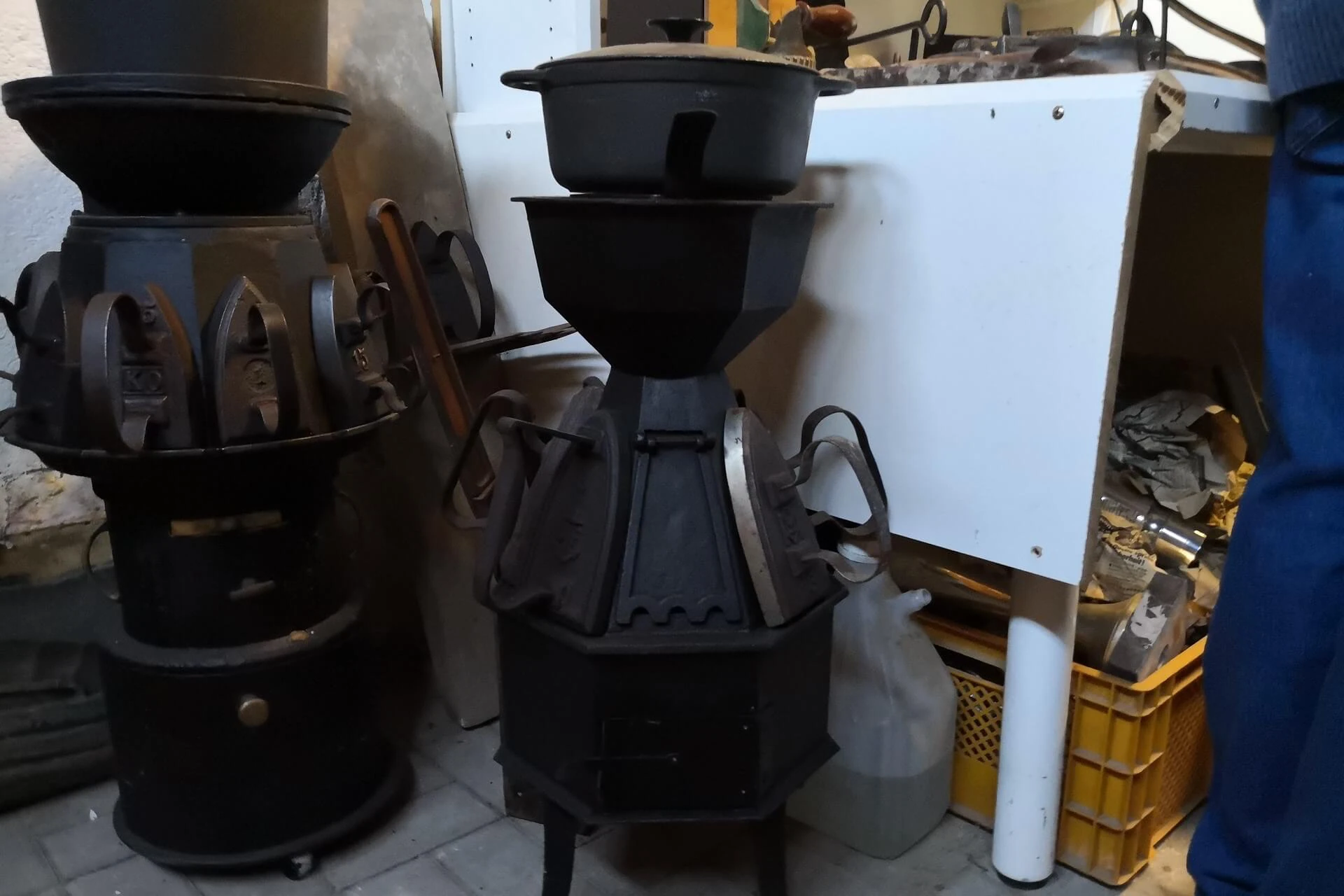The "Museum zum alten Eisen" in Mückeln
Everyone knows it: the dreary cup weather in the cold winter months. It's often cold and wet or uncomfortable outside - so it's hard to get up the courage to go out into nature. But that is no reason to give up. In the GesundLand Vulkaneifel, one exciting excursion destination follows the next, and many of them are also perfectly suitable when the weather is rough and unstable. A few weeks ago, for example, I discovered the "Museum zum alten Eisen" (Museum of Old Iron), which is hidden away in an old barn in the small Eifel village of Mückeln. This particular museum is a great vacation activity even on rainy days.
The best-known museums in the GesundLand Vulkaneifel are probably the geomuseums in Strohn and Manderscheid, where you can vividly experience everything that happened in the Eifel during the explosive period of volcanism. But today I am off to a completely different corner of the GesundLand, namely to Mückeln. The place, which at first glance seems quite contemplative and perhaps even a little inconspicuous, hides a little secret. For in the middle of the village stands an old barn, behind whose creaky gates many small treasures are hidden. The sign in front of the barn gives it away: Here is the "Museum zum alten Eisen"! But exactly what treasures Karl-Heinz Rauen, who runs the small museum with a lot of passion, is hoarding behind the old walls, I could not have guessed before.
As soon as I enter the barn, I am in pure amazement: I find myself in a large room that is filled to the last corner with things that remind me of times long past. One shelf immediately catches my eye: on one side of the room, hundreds of trophies are stacked on some shelves. Another trophy probably could not have been placed on it without the construction giving way to the weight. How many prizes would there be, I wonder? In any case several hundred. In his younger years, Karl-Heinz Rauen was an enthusiastic rally racer - and very successfully, as the countless trophies that crowd the shelves prove. An old motorcycle, which has found its place directly in front of the shelf and attracts many a dreamy glance, also bears witness to his love of motorsports. While I let my gaze wander through the room, I keep discovering something new: Old radios and Volksempfänger stand next to old sewing machines from Singer and three huge alphorns hang from the ceiling. In one corner, a glass bottle with an old-fashioned label of Dauner Sprudel can be found next to nostalgic-looking, slightly dusty advertising boards, for example for "Maggi's Grund-Saucen" (Maggi's basic sauces), which were available for 25 pfennigs back then. In this museum, nostalgia truly comes alive! And other boards advertise household aids from the old days: "Persil self-acting detergent for all laundry" stands next to "Henkel's washing and bleaching soda" (without chlorine!) and "Sunlicht soap" (Greatest washing power, effortless work, greatest success!).
I quickly realize that this half of the room is only a small section of what Karl-Heinz Rauen has accumulated in recent years. To the left are numerous household helpers from a time when almost everything still had to be accomplished with pure hand and muscle power. Among them are several old butter churns. To make butter, you need cream, and for its production, in turn, milk. Preferably untreated raw milk, which is no longer so easy to come by today. The reason: it spoils very quickly. In the past, however, it was quite normal to use raw milk for everything, because many households still had a few cows of their own in the barn back then. To make butter from the cream, there were different types of butter churns: push butter churns, whipped butter churns, cradle butter churns...but the task was always the same: the fat globules of the cream had to clump together to become butter. Around 20 liters of milk were needed to make one kilo of butter back then. Making butter was very time-consuming, because after the daily milking, the fresh milk first had to be set aside to cool. This caused the cream to settle on top. This cream was then skimmed off with a ladle and kept cool. This process was necessary several times until enough milk cream had been collected for a portion of butter. After the invention of the centrifuge in 1877, the process was quicker: the milk could be put directly into the centrifuge and operated with a hand crank, so that the cream and liquid separated within a very short time. The cream obtained in this way was further processed in the butter churn. In the case of a butter churn with a hand crank, the cranking had to continue at a steady rhythm until the fat globules clumped together and became solid butter. A sieve was then used to separate the last remnants of the excess buttermilk from the clumped butter flakes.
I listen intently to the stories that Karl-Heinz Rauen has to tell about each of his objects. Today, I'm only familiar with the butter that you just take off the shelf in the supermarket. I have never thought about how hard it was to make butter in the past. It is therefore all the more interesting for me to gain an insight into life in the past, of which I no longer have any knowledge. It fascinates me what means were used to get by...completely without the help of electric machines.
On a table very close to me are countless old waffle irons. In the past, the waffle irons had much more beautiful ornaments than the heart shapes with the typical check pattern we know today. Beautiful ornaments made the waffles not only a culinary treat, but also a real feast for the eyes. Even then there was also the familiar heart shape, but also rectangular and even hexagonal waffles.
Not far away waits a true curiosity, which I have never encountered in my life. Therefore, I can not even imagine what this ancient metal part should be good for. It is a so-called ironing mushroom. It could be attached to the edge of the table and was especially useful for pieces that were difficult to iron. All the pieces are turned inside out and passed over the ironing fabric. "With "ironing mushroom" both hands are free to guide the fabric. No more strain as there is no heavy iron, just moving the fabric. For button bands, shoulder parts, sleeves on blouses, dresses and for nightgowns, "Bügelpilz" has proven excellent," I read in the accompanying instructions.
In Karl-Heinz Rauen's collection, I also find things whose necessity would never have occurred to me before. For example, an old hostess iron. Host iron? Of course, also hosts had to be baked somehow! In principle, the host iron worked like a small waffle iron. In addition, Christian symbols could be embossed into the hosts.
Right next to the hostess irons hang structures on the wall that are reminiscent of cast-iron trivets - and I'm not far wrong with this assumption. Although no hot pots are placed on them, irons are. Kind of like early versions of our ironing stations today...Some coasters are quite functional and simple in design, others have elaborate patterns. One of them even reminds of a heart. Quite inconspicuously on a small shelf on the wall stands for me the favorite curiosity of this museum, namely the "Bugolette", advertised as the "iron of the future". What was so special about this model of iron? You could iron and cook with it at the same time! A small container could be placed on the ironing surface, which was heated by the heat of the iron, so that food could be heated with it. The idea is not so far-fetched...but to use an iron for cooking, the idea would probably come today (almost) no one.
The last room is the heart of the museum: the iron collection. On the upper floor of the old barn, irons of all sizes and shapes are crowded together on the shelves - there must be several hundred of them. Some are coarse and heavily worked, others small, light and with all kinds of ornaments. All the irons are similar, and yet none is like the other. Some, which are very large, have a trigger for the steam worked in the shape of a dragon's mouth. Some are very small and handy. Still others were made specifically to be easy to take with you when traveling. Some had to be filled with hot coals, some were heated with the help of gas, still others received their heat from an iron stove. There are several of these iron stoves here. Some of them can heat five or even more irons at the same time. The irons were hung on a holder on the furnace. There they remained until they were hot enough to straighten garments. When it was cool, you hung it back on the stove and grabbed the next heated iron. Ironing ovens, just like irons themselves, come from all over the world. And each country made their irons a little differently, I quickly see. Overall, I'm seriously impressed.
Who would have thought that an exhibition about all kinds of old iron could be so interesting? Who would have thought that there is so much to tell about irons? I certainly didn't. For me, irons had always been associated with the tedious task of ironing. But I would never have thought that there is actually a whole little world hidden behind them. I am simply amazed at the cleverness with which people used to know how to help themselves. Even with the simple means that were only available, people could create a lot with a lot of creativity and problem-solving potential to make the exhausting everyday life a little easier. A little journey through time that I will remember for a long time.
By submitting the form, you agree to our privacy policy.
